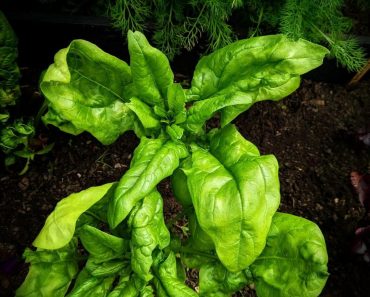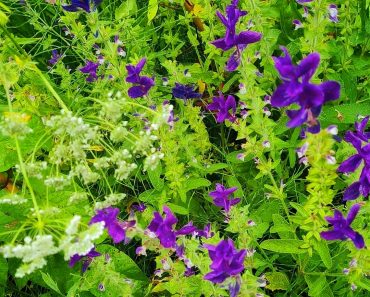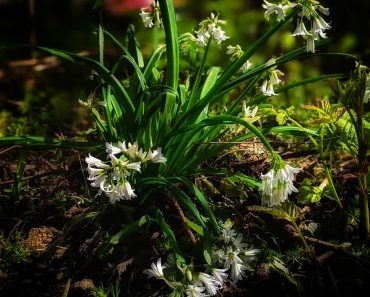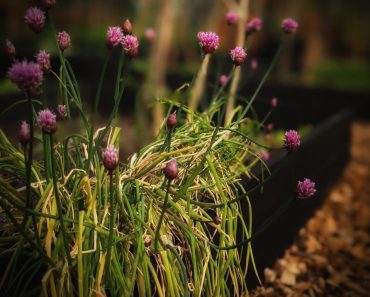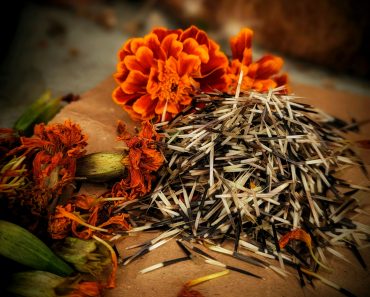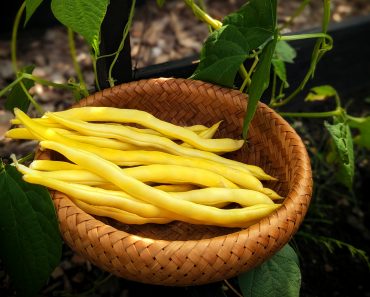Cleavers (Galium aparine) is a common Annual weed which starts emerging around March in the UK. Capable of Climbing and rambling over neighbouring plants – this vigorous, edible and Healing plant can grow as much as 10ft in one season! Named Cleavers for its proclivity to attaching or ‘Cleaving’ itself to animal fur or clothing.

This Post May Contain Affiliate Links Please See My Disclosure Policy
The Practical Joker
Ah Cleavers! I got pranked countless times as a kid with these, here in the UK Cleavers are also affectionately known as ‘Sticky Willy’s’. Sticky Willys are the ammunition of every mischievous child! Often thrown or placed on a friends back, you never knew it was there until you got home and your mum removed it…I know this to be true because it happened to me several times!
Other common names for Cleavers are….
Goosegrass, Sweethearts Kisses (I assume due to its clinging habit) Bobby Buttons, Sticky Willow, Stickyjack, Grip Grass, Claggy Meggies, Robin-Run-The-Hedge, , Catchweed, whippysticks and Gollenweed.
Cleavers Origins
Cleavers Botanical Name is Galium Aparine and is derived from the Greek word, meaning ‘milk’ – the flowers of the Galium verum were once used as an aid to curdle milk in the cheese making process. ‘Aparine’ means ‘seizing’ or ‘clinging’. Cleavers is native to Europe, North Africa, Canary Islands, Japan and the UK. It is now also naturalised throughout most of the United States, South America, Canada and Mexico. This weed has its boots on! It’s everywhere…far and wide, the international edible healing weed!
Cleavers Identification and Characteristics
Cleaver stems range in size from 30 cms-150 cms long, with hooked prickled, narrow lance shaped leaves, they eventually develop tiny star-shaped white flowers that present in small clusters of 2 or 3.
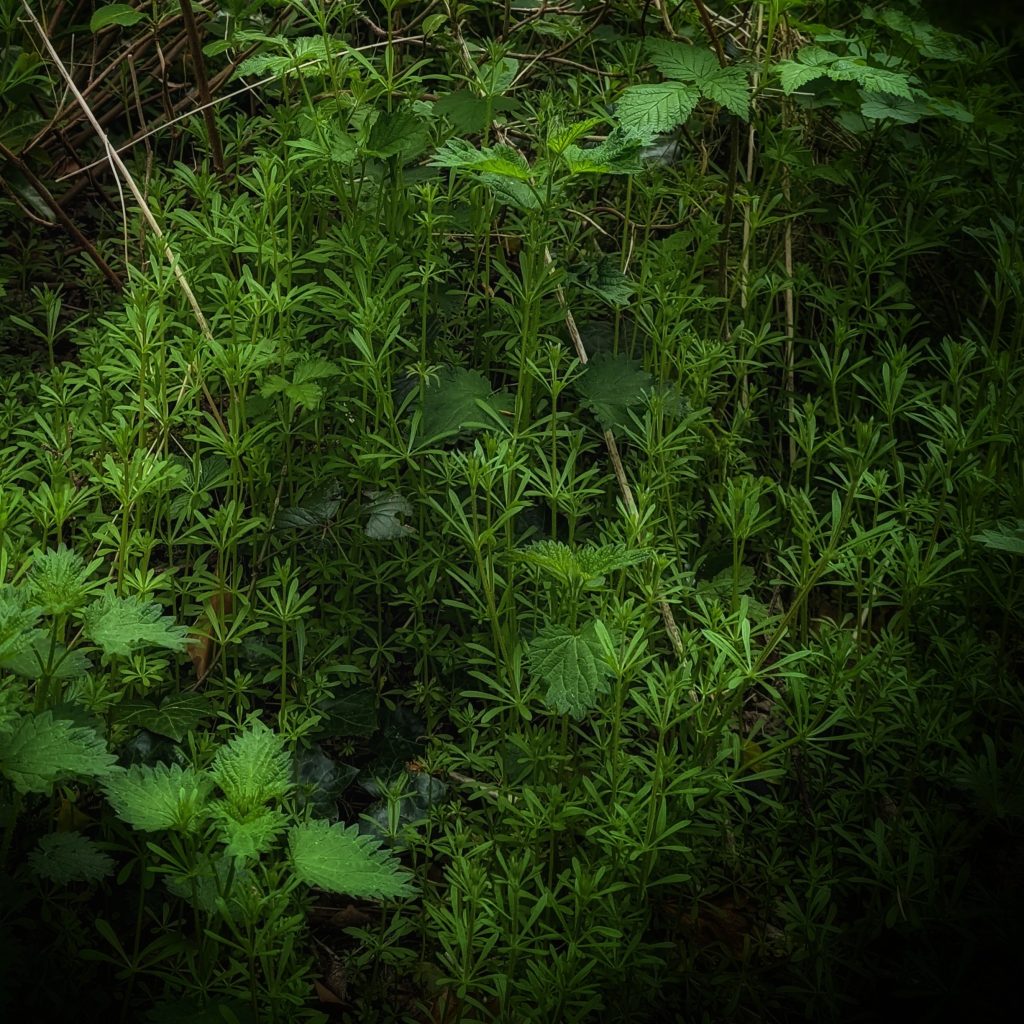
Where To Forage For Cleavers
Cleavers are not all that hard to find, where I live in the North West Of England they mostly grow in woodland and hedgerows, but you can also find them on scrub and arable land, in gardens and on river banks.
*Some Foraging Etiquette
There are some rules you should abide by if you intend to forage for food, or for foliage.
Only take what you need-Take no more than you plan to consume or use and try to forage over a wide area rather than picking from one patch. Make sure you’re foraging doesn’t disturb the habitats and environments of the local wildlife.
Leave No trace– Leaving no trace of your presence is a sign you have foraged responsibly. Do not trample or disturb roots and only take when there is an abundance of your chosen food or foliage. This allows the plants to replenish and renew.
Don’t Pick from Private land – If you intend to, be sure to get permission first.
Only Pick from Clean areas – Avoid Roadsides, Industrial areas & Top tip* Foraging from the base of a tree for example would not be wise, the likeliness of a dog previously cocking its leg there…is high! If you intend to consume what you have foraged, wash first.
How To Eat the Cleavers Plant
Cleavers foliage is best picked when young, before the flowers appear, if you wait too long the leaves become fibrous and bitter. Fresh young Chopped leaves and stems can be incorporated into soups, pies and stews. *The plants bristle like texture is softened when boiled.
Can Cleavers be eaten raw ?
Yes, Young Cleaver shoots can be eaten raw and added to salads. However, most people prefer to boil them first due to their bristly texture
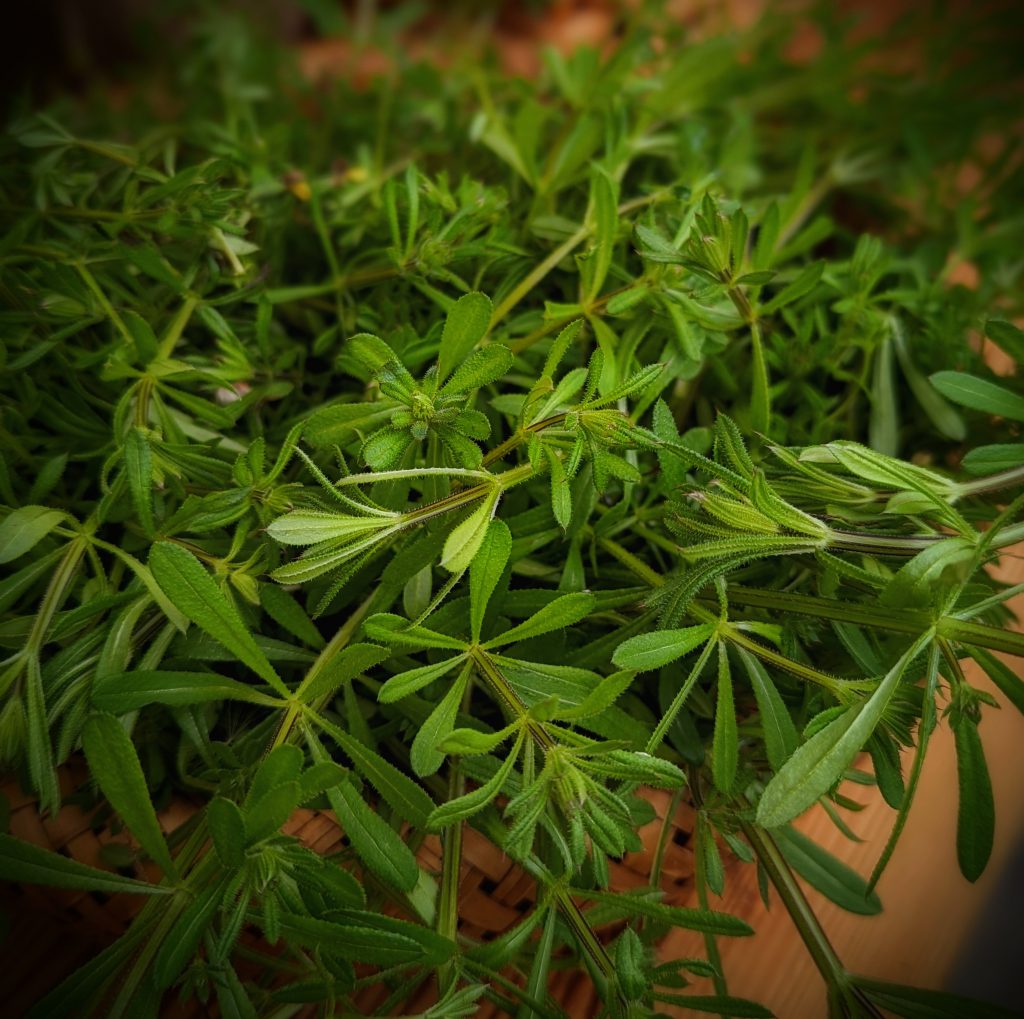
What Does Cleavers Taste like?
Cleavers have a fresh green taste and are mildly herbal-hope that makes sense!
Ever Tried Cleavers Coffee?
Cleavers can also serve as a coffee substitute! When the plant goes to seed, collect the seeds, dry them and ground them to make coffee.
Medicinal Uses Of Cleavers
Cleavers is mostly used for its diuretic properties. It is a wonderful cleansing herb for kickstarting the lymphatic system and flushing the body of harmful toxins affecting the Kidneys. A tea made from Cleavers can be very helpful for alleviating urinary tract troubles.
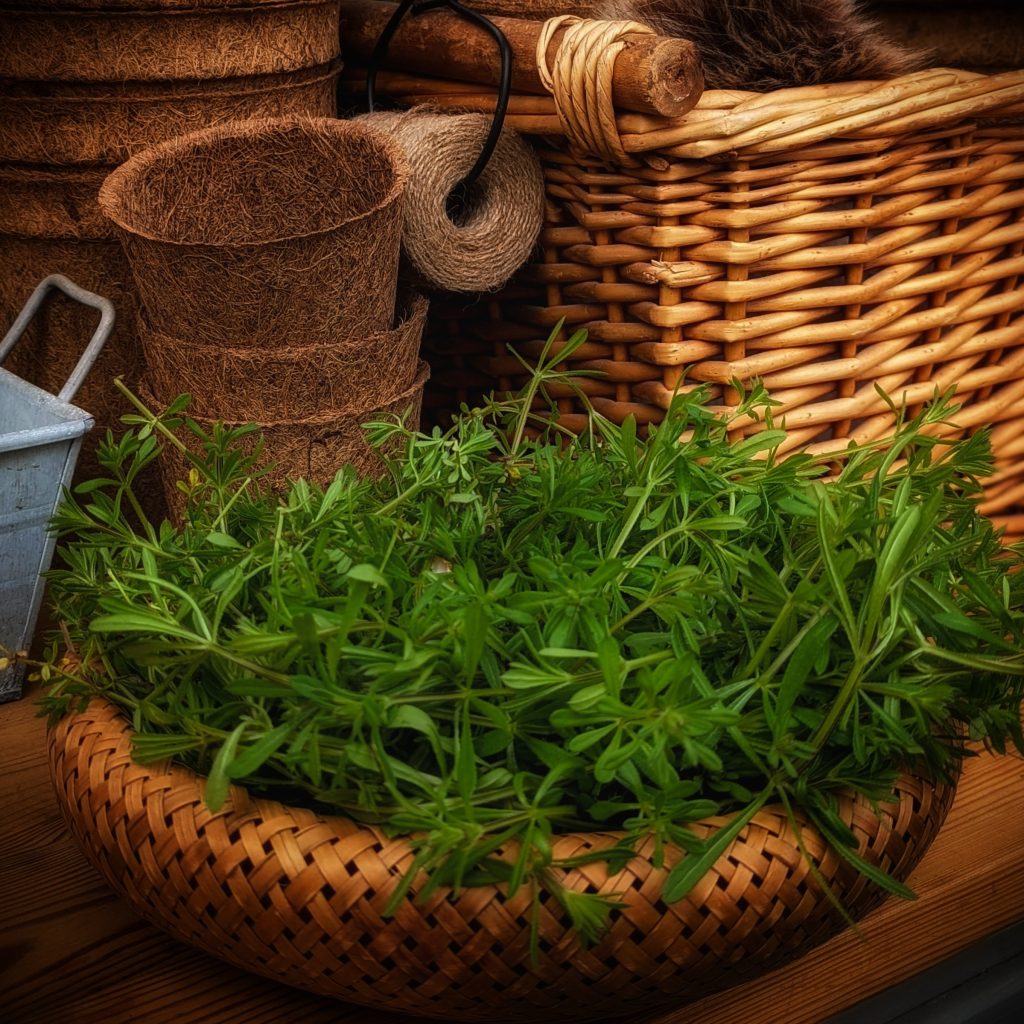
How To Make Cleavers Tea
Steep 1-2 heaped tsp of fresh Cleaver Leaves in a cup of boiling water for 10 minutes, then drink.
For long term storage of cleaver Tea– Harvest and dry Cleavers leaves. Place in a dehydrator on the lowest setting for 12 hours or dry flat on a piece of newspaper. Once completely dry, store in a clean jar for up to 1 year
Cleavers Tincture for Skin Problems
I have also used Cleavers in a Tincture to help with skin conditions such as Eczema. A cleavers tincture has also been known to help cool other inflamed skin conditions such as acne and psoriasis.
How To Make A Cleavers Tincture
- Pick Cleavers when they are bright green and place in a clean jar.
- Fill to the top with Olive oil, submerging the cleavers completely and put the lid on.
- Leave in a dark place, for at least 1 month- give it a good shake once a day.
- Strain the liquid through a cheesecloth, separating the foliage from the oil.
- Place the oil in a clean pipette bottle and apply to skin as needed
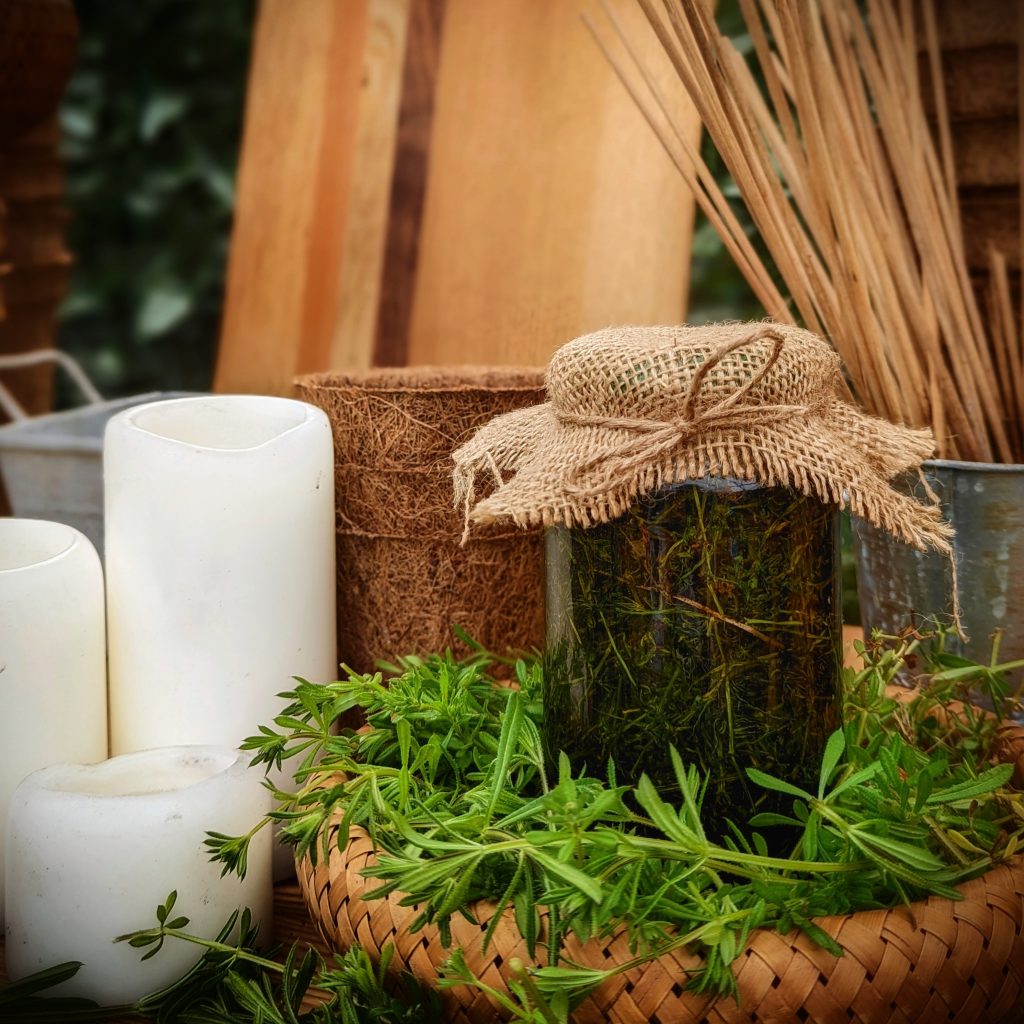
*Any specific health claim or nutritional claims or information provided on the Website are for informational purposes only. Nothing on the Website is offered or intended to be a substitute for professional medical, health, or nutritional advice, diagnosis, or treatment. This Website is not intended to diagnose, treat, cure or prevent any disease. You assume full responsibility for consulting a qualified health professional regarding health conditions or concerns.
Useful Foraging Equipment
Affiliate Links
More Foraging Posts
How To Harvest and Make Dandelion Root Tea
How To Forage For Three Cornered Leek
How To Harvest and Make Nettle Tea
How To Harvest And Use Horsetail in a Healing Tea
Looking For more ‘Homely’ Inspo ?
Have a Nosey Around the Blog! See what i’ve been Baking, Growing and Drinking! Also, pop over and say Hi on Instagram

